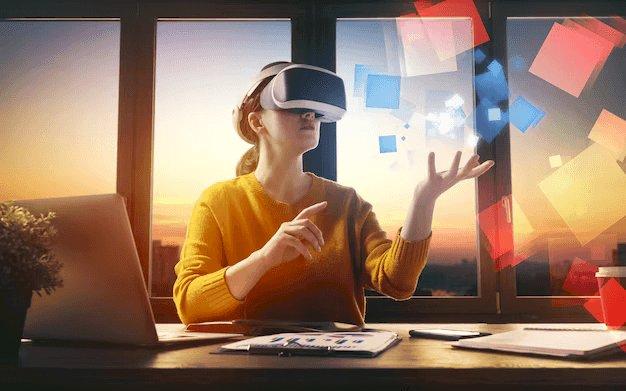The Impact of Virtual Reality in the Classroom of Tomorrow
Discover the transformative impact of virtual reality in education. Explore the benefits, applications, and challenges of VR technology in the classroom of tomorrow.

Introduction
The world of education is evolving rapidly, and virtual reality (VR) is at the forefront of this transformation. Virtual reality is not just a technology for gamers; it's also a powerful tool that has the potential to revolutionize the classroom of tomorrow. In this blog, we will explore the profound impact of virtual reality in education, its benefits, practical applications, and how it is reshaping the way students learn.
Understanding Virtual Reality in Education
Virtual reality is a technology that immerses users in a computer-generated three-dimensional environment. With the help of specialized hardware, such as VR headsets and motion-tracking devices, students can step into virtual worlds and interact with objects and scenarios as if they were physically present. In the context of education, this technology holds immense promise.
Benefits of Virtual Reality in Education
-
Enhanced Engagement: One of the most significant advantages of VR in the classroom is its ability to captivate students' attention. The immersive nature of VR makes learning more engaging and memorable, leading to improved retention of information.
-
Experiential Learning: VR allows students to experience concepts and scenarios that would be impossible or too dangerous in the real world. For example, students can explore the surface of Mars, dissect virtual organisms, or visit historical events and locations.
-
Customized Learning: Virtual reality can be tailored to individual learning styles and paces, offering personalized learning experiences. Students can choose their paths, delve deeper into areas of interest, and learn at their own speed.
-
Accessibility: VR can make education more accessible for students with disabilities. It provides alternative methods for learning and can accommodate different learning needs.
-
Global Learning: Virtual reality enables students to interact with peers and educators from around the world, fostering a global perspective and promoting cultural understanding.
Practical Applications of Virtual Reality in Education
-
STEM Education: VR is particularly valuable in teaching science, technology, engineering, and mathematics (STEM) subjects. Students can explore complex scientific concepts through interactive simulations.
-
History and Geography: Virtual reality can transport students to historical periods and geographical locations, making history and geography lessons come alive.
-
Language Learning: VR can be used to create immersive language learning environments, allowing students to practice their language skills in realistic scenarios.
-
Medical and Healthcare Education: Medical students can benefit from virtual surgeries and anatomy lessons, providing a safe and realistic learning experience.
-
Art and Design: Virtual reality can be used for art and design education, enabling students to create and manipulate 3D models in a virtual space.
Implementing Virtual Reality in Education
-
Investing in Hardware: Schools need to invest in VR hardware, including headsets, controllers, and computers capable of running VR applications.
-
Educator Training: Teachers must receive proper training to integrate VR into their curriculum effectively.
-
Content Creation: Developers need to create educational VR content and applications that align with learning objectives.
-
Safety and Monitoring: Ensuring student safety while using VR is crucial. Supervision and monitoring of VR sessions are necessary.
-
Addressing Equity: Ensuring that all students have equal access to VR technology is essential to prevent educational inequalities.
Challenges and Considerations
While the potential of VR in education is vast, there are challenges to overcome:
-
Cost: VR technology can be expensive, making it difficult for some schools to implement.
-
Content Quality: The quality of VR educational content varies, and not all applications are equally effective for learning.
-
Motion Sickness: Some students may experience motion sickness or discomfort when using VR, limiting its accessibility.
-
Safety Concerns: Proper precautions must be taken to ensure the physical and emotional safety of students while using VR.
Conclusion
Virtual reality is transforming the classroom of tomorrow by offering immersive, engaging, and personalized learning experiences. Its impact on education is profound, from enhancing student engagement and understanding to providing access to experiences that were previously out of reach. As the technology continues to evolve and become more affordable, we can expect to see virtual reality becoming a standard tool in education, preparing students for the challenges and opportunities of the future.
As educators, institutions, and developers work together to harness the full potential of virtual reality, we are on the cusp of an educational revolution that promises to redefine the way we teach and learn. The classroom of tomorrow is not confined by physical walls; it's an expansive virtual world where students can explore, create, and discover like never before.

 bloggeramar
bloggeramar 

































